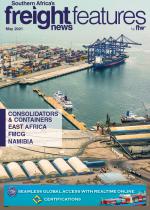The Namibian Road Fund Administration ranks with the United States of America and Switzerland in terms of transparency around the allocation of funds generated through charges for road usage, according to Helvi Petrus.These findings are part of a PhD thesis supervised by the University of Stellenbosch.This research evaluated the relationship between the road-generated revenue (RGR) and its allocation towards the national road network expenditure.With 80% of road-user funds being allocated to road expenditure, Namibia is on par with the United States of America and Switzerland.Petrus’s findings echo those of Freight News, which has been told by representatives of trucking and logistics associations that the RGR funds are “ring fenced” for road building and maintenance – unlike South Africa’s fuel levy, which is allocated to general funds within government. The Namibian national road network covers approximately 48 399 km.But, the challenge – as with many countries around the world – is that more money is needed for roads.This could lead to higher charges for the trucking industry.“Heavy vehicles impose the highest costs in terms of infrastructure damage and environmental costs. “When applying marginal costing, heavy vehicles contribute approximately 98% (district road), 97% (main road), and approximately 98% (trunk road) in terms of external costs. “Overall, light vehicles contribute the most to congestion and accident costs,” states Petrus. The study recommends that the government revise its Mass Distance Charges (MDCs) for heavy vehicles and fuel levies, and follow Australian and New Zealand models, which are distance based.

